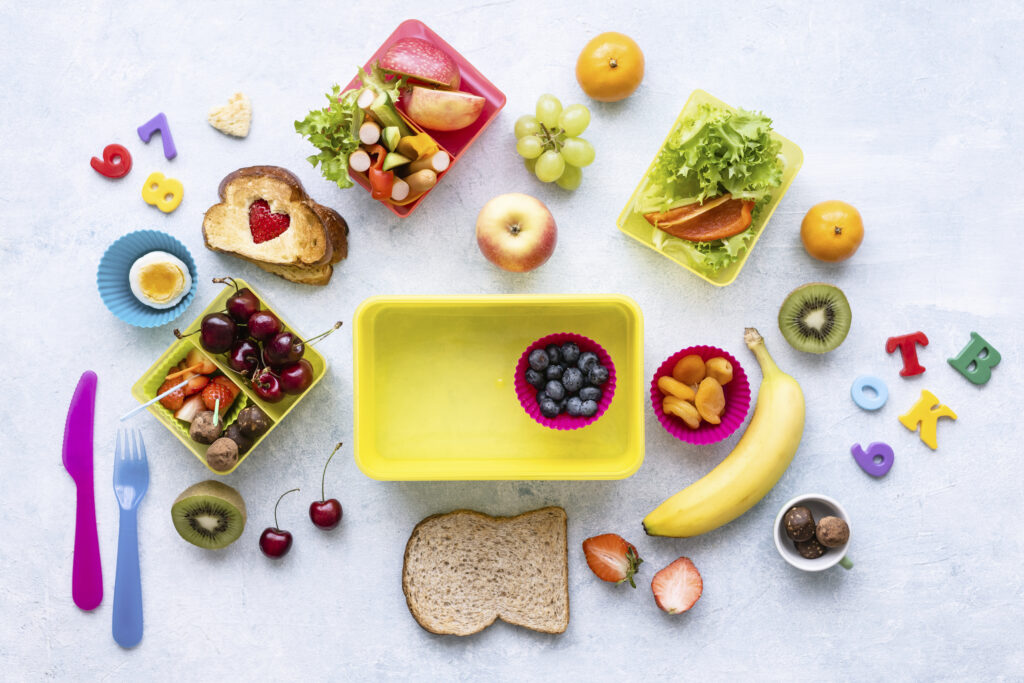
As schools throw open their doors for the 2024-2025 school year, you might be wondering if you should be packing a home lunch or letting your kids get a school lunch. The National School Lunch Program provides lunches (and breakfasts by the way) to nearly 30 million children every school day. However, it’s estimated that roughly 40% of children bring their lunches from home on any given school day. Both options have pros and cons.
For example, school lunch is convenient. But having your child learn to pack a lunch can help teach life skills like meal planning and food preparation. School lunch is also inexpensive (and often free these days as more states are supporting universal school lunch). But a home lunch can include foods with specific characteristics (such as organic, allergen-free, and vegan). These are just a couple of examples. Let’s take a look at some considerations that may help you decide which lunch option is right for your kids.
Which Is More Nutritious?
A systematic review and meta-analysis of home lunches was just published in Advances in Nutrition. It found that lunches brought from home tend to have a lower nutritional quality compared to national school lunch offerings. Nutritionally, lunches from home often lack fiber, iron, protein and vitamin A. (Calcium too, which might be explained by the premise that children will be purchasing milk at school.) Home lunches also tend to be higher in carbohydrates and saturated fat. A lack of vegetables and more snack foods, desserts, and sugar-sweetened beverages are common among home lunches too. Nutrition requirements for school lunches are not arbitrary—they’re based on the Dietary Guidelines for Americans. And for many children, a school lunch is the most nutritious meal they get all day.
The Likability Factor
You can give a child a healthy lunch, but that doesn’t guarantee they will eat it. And that holds true for both home and school lunches. (Anyone remember trading items from your home lunches?) The school lunch program requires a balanced meal containing vegetables, fruit, milk/soy milk, protein, and whole grains. No doubt there are items in the school lunches that don’t hold appeal for all children. However, there is value in exposing children to foods they haven’t tried before. Children typically need several experiences with an unfamiliar food before they decide to eat it or like it. And it’s especially helpful for children to see their friends eating foods they themselves haven’t tried yet. School lunch offerings also usually have a few options. So chances are good that there will be at least something your child will like.
Dealing with Food Allergies
Having a child with food allergies or intolerances is always a serious concern. Packing a lunch from home can help reassure parents that their child will only be eating safe food items. However, school lunches can also be suitable for children with food allergies. Schools are obligated to make accommodations for children with food allergies that are documented by a healthcare professional. 504 plans are documents that indicate accommodations the school provides for students. For students with allergies and intolerances, a 504 plan might include ensuring access to non-allergenic foods when food is being provided to all students. And having designated “allergen-aware” tables in the cafeteria, where the most common allergens are not allowed.
There are many resources for parents to learn how to prepare their children for handling food allergies at school. Parents can also learn what plans schools and foodservice workers have in place to keep children with food allergies safe.
School Lunches Become More Diverse and Local
Over the years, the National School Lunch Program has made strides to improve the variety of foods served to students. This growing movement acknowledges the increasing diversity of our country and the importance of cultural foods. Serving “culturally appropriate” food means including ingredients and preparation methods that show appreciation for peoples’ diverse preferences and traditions. It’s becoming increasingly popular for schools to include foods common in cuisines of other countries or sub-regions of countries. Incorporating more local foods is another change that has taken root. Through the Local Food for School Program, school districts that opt in can apply for grants to purchase local foods for school breakfast and lunch meals. And starting this fall, schools will have the option to require unprocessed agricultural products be locally grown, raised, or caught. This development will also make it easier for schools to use more local foods.
School Meal Changes on the Horizon
The USDA recently finalized updates for school lunch nutrition regulations. Part of the impetus for these changes is keeping lunches aligned with the U.S. Dietary Guidelines. They’re also part of the current administration’s national strategy to end hunger and reduce diet-related disease by 2030. The changes won’t be showing up at your school until next year (the 2025-2026 school year), but they will include:
- Limits on added sugars in certain products like yogurt and flavored milk
- Allowing meat alternatives
- Removing minimum grain requirements at breakfast
- Allowing schools more time to implement sodium limits
The Best of Both Worlds
When my children were in public school, we reviewed the school menus together. Then they’d decide which two or three days to eat school lunch and which days to bring lunch from home. This allowed them some autonomy in food selections. It also encouraged them to learn to eat food someone else had prepared. And it gave them opportunities to pack their own lunches (with some supervision), ensuring they’d like their entire lunch. Ultimately, the decision about whether to bring lunch or eat the school lunch is a family decision. And there are no right or wrong answers.